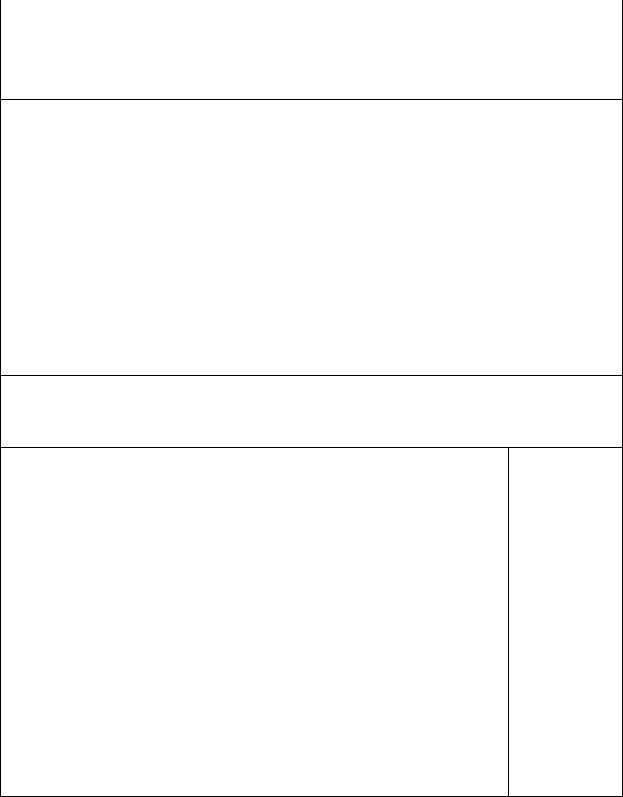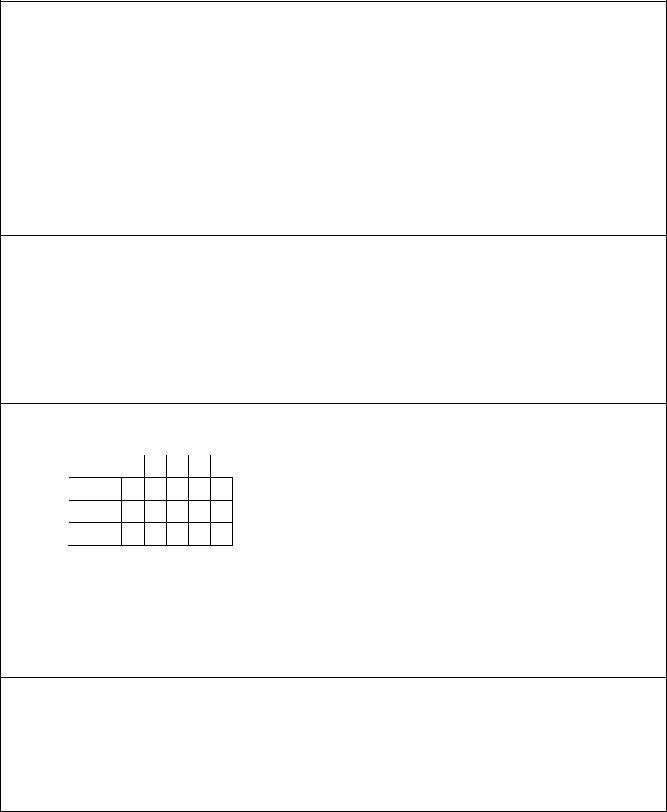In today's fast-paced and intricately structured work environments, the clarity and comprehensiveness of a job's duties, requirements, and conditions cannot be understated. The Job Analysis Form plays a pivotal role in capturing the essence of a position, ensuring that both employers and prospective or current employees have a clear understanding of what a job entails. Among the major aspects covered by this form are the fundamental functions and scope of the job, providing a brief yet thorough overview of its purpose and the range of actions expected. Detailed descriptions of the work performed give insight into daily duties, the frequency of these tasks, and the importance of each duty within the larger framework of the role. Additionally, the form assesses work contacts, shedding light on the level of interaction and the nature of communications an employee might expect, further indicating the social and collaborative requirements of the position. The degree of autonomy and decision-making latitude allowed is also detailed, offering a gauge of the independence afforded in role execution. A significant component of the form addresses supervisory responsibilities, outlining the extent of oversight or direction an employee might hold over others. Physical effort and work conditions sections anticipate the tangible demands of the job, ensuring candidates are aware of the physical and environmental aspects of their work. Finally, essential qualifications, including education, training, and experience, are specified alongside other job-related requirements such as language proficiency, which completes the form’s comprehensive approach to outlining a role’s dimensions. Through these components, the Job Analysis Form acts as a critical tool in aligning job design, recruitment, assessment, and career development processes with the actual needs and realities of the workplace.
| Question | Answer |
|---|---|
| Form Name | Job Analysis Form |
| Form Length | 4 pages |
| Fillable? | No |
| Fillable fields | 0 |
| Avg. time to fill out | 1 min |
| Other names | job analysis form pdf, form job analysis, job analysis form blank, job hazard analysis form |

JOB ANALYSIS FORM
Job Title: |
Department: |
|
|
Section: |
|
|
Unit: |
|
Reports to: |
|
|
Interviewed: |
Job Title: |
Date: |
(Name) |
|
|
1.Basic Functions and Scope
Give a brief summary of the main purpose of the job and the prime reason for its existence. State briefly its scope and range of action. Include quantitative data where possible.
2.Work Performed
Describe in some detail the duties performed. State specifically what is done and explain why and how. Illustrate with examples where appropriate. State frequency e.g. daily, weekly etc. Listing may be in any logical order most appropriate for the job e.g. by order of importance or sequence of performance.
Percentage
of Time

3.Work Contacts
Measures the extent to which the post holder requires the ability to gain cooperation, deal with and influence other people using tact, persuasion and judgment. Indicate level, frequency, difficulty and importance of work contacts.
Persons Contacted |
Frequency |
Nature & Purpose of Contact |
Means of Contact |
(Check applicable items) |
Occasional (O) |
(Personal, Telephone, etc.) |
|
|
Periodic |
(P) |
|
|
Frequent |
(F) |
|
Immediate Associates
At own level in other departments
At next higher level in other departments Other (Specify)
Outside Company (Specify)
ٱ
ٱ
ٱ
ٱ
ٱ
4.Latitude for Actions or Decisions
Indicate the freedom of action or discretion allowed under the policies, procedures and practices controlling the job.
Type of Assignment:
ٱWorks according to detailed instructions
ٱWorks according to standards instructions or readily understood procedures.
ٱWorks according to
ٱWorks according to established procedures and specialized clerical, administrative or technical standards.
ٱDetermines work method from alternative existing methods in accordance with established policies and professional standards.
ٱDevises work methods according to general directives, policies and specialized professional standards.
ٱWorks under broad assignment guided by policies and overall programs.
Extent of Check and Supervision Received
ٱWorks under immediate and close supervision.
ٱWork is subject to detailed check at regular intervals.
ٱCompleted work is checked at a subsequent stage in the work cycle.
ٱSupervisor keeps advised of work progress and spot- checks completed work.
ٱCompleted assignments subject to subsequent review.
ٱAccomplishments are subject to general review.
ٱWork accomplishments are subject to general review by top management.
Specify nature of assignments and explain: |
Give examples of the type of problems referred upward: |

5.Supervisory Responsibility
a.Full Supervision. Supervising, controlling and being fully accountable for the work of subordinates including responsibility for training and career development and for personnel actions such as discipline, performance appraisal, merit review, vacation scheduling, etc. Check organization chart and indicate job titles and numbers supervised.
Company Employees – Job Titles |
Number Supervised |
b.Work Direction. Providing instructions to others, scheduling their work and being accountable for its quality and quantity. Includes overseeing the work of contractor’s personnel. Indicate job titles and numbers, etc.
Company Employees – Job Titles & Numbers |
Contractor’s Personnel |
6.Physical Effort
Physical effort required to perform the job. Refers to the amount of physical exertion in handling materials, using tools, and operating machines or equipment. Note: Fill in section b, c, and d only if a is not applicable.
a. Operates no controls, machines or equipment. No significant lifting required. ٱ
b.Identify tools, equipment, machinery and materials handled. Indicate approximate percentage of available work time.
|
% |
Tools |
____ |
Equipment |
____ |
Machinery |
____ |
Materials Weight (kgs.) |
____ |
c. Comments: |
|
d. Position while working |
% |
Walking/Standing |
____ |
Climbing |
____ |
Lifting |
____ |
Pulling/Pushing |
____ |
Working in cramped positions |
|
or confined space |
____ |
Sitting |
____ |
7.Work Conditions
The degree of exposure to work conditions such as dirt, heat, fumes, noise, vibration, etc.
a. Surroundings |
ٱ |
b. Degree (Check applicable items) |
c. Percentage of Work Time |
||
Dirt |
Slight |
Moderate |
Intensive |
|
|
Heat |
ٱ |
|
|
|
|
Fumes |
ٱ |
|
|
|
|
Water |
ٱ |
|
|
|
|
Noise |
ٱ |
|
|
|
|
Vibration |
ٱ |
|
|
|
|
Grease, Oil |
ٱ |
|
|
|
|
Dust, Shavings |
ٱ |
|
|
|
|
Clean, Pleasant |
ٱ |
|
|
|
|

8.Education and Training
Minimum academic, commercial and technical qualifications required for performing the full duties of the job.
a. Academic |
|
|
Basic |
(4 years) |
ٱ |
Elementary |
(6 years) |
ٱ |
Intermediate |
(9 years) |
ٱ |
Secondary |
(12 years) |
ٱ |
B.A./BSc. Degree in |
ٱ |
|
________________________ |
|
|
_________________________
b. Formal Technical, Trade or Commercial Training Type of Qualification (Specify certificate or diploma if required).
Number of years: |
________ |
|
|
________ |
9.Experience
Minimum previous experience regarded as essential for a person with the specified educational background to acquire sufficient
a. |
Field of Experience ____________________ |
c. |
Minimum Period of Related Experience ________ years. |
b. Type of Job _______________________________
d.Minimum period of Site
e. Essential Short Courses: ______________________________________. Length of time _________________.
______________________________________. Length of time _________________.
10.Other Requirements a. Languages
A- Basic job knowledge
A B C D E
Arabic
B- Simple spoken and written
C- Fair spoken and written
English
D- Good knowledge
E- Very good knowledge
F- High level of proficiency
b.Other
Typing speed _________ wpm. Shorthand speed ________ wpm. Driving License (type) _______________.
11.Other Observations